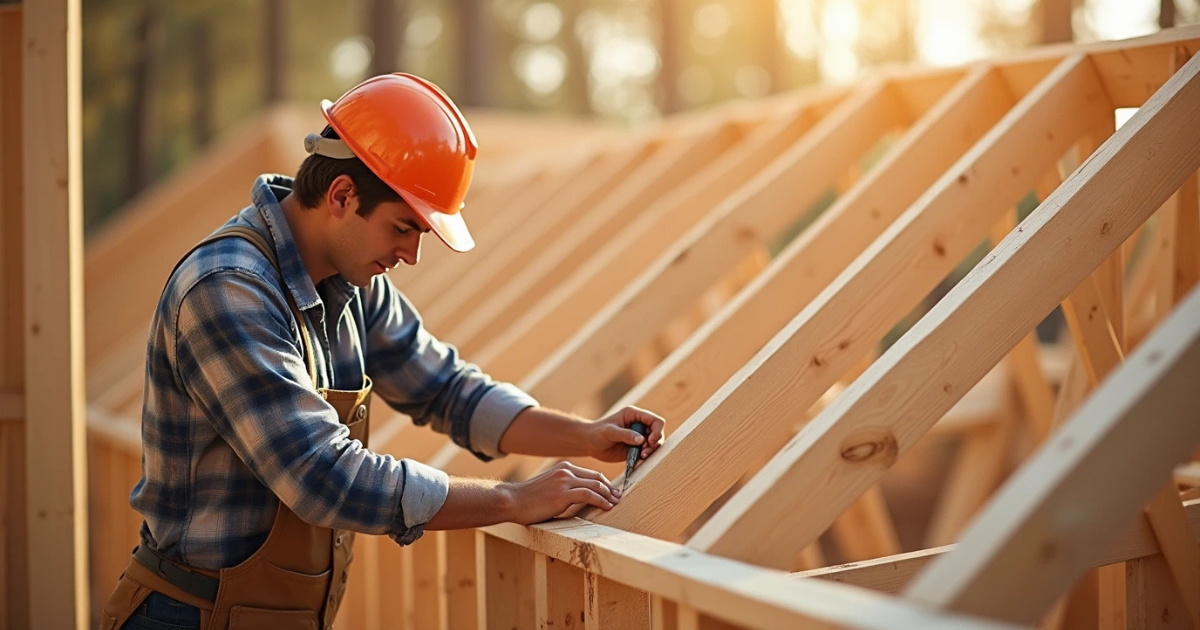Building your shed is an exciting venture that allows you to combine practicality with creativity. As you embark on this journey, understanding shed roof framing techniques is essential. This article will guide you through everything you need to know about framing a shed roof, from choosing the suitable materials to mastering various techniques. Whether you’re a novice builder or looking to refine your skills, this comprehensive guide will empower you to construct a sturdy, attractive shed that meets your needs.
Table of Contents
What is Shed Roof Framing?
Shed roof framing refers to creating the structural support for a roof with a single slope. This style is simple to construct and offers a modern aesthetic that fits well in various settings. Understanding this technique is crucial, as it ensures your shed is durable and weather-resistant.
Importance of Shed Roof Framing
The framing of your shed roof plays a significant role in its overall strength and stability. A well-framed roof can withstand harsh weather conditions, protect your belongings, and contribute to the longevity of your structure.
Common Uses for Shed Roofs
Shed roofs are versatile and are commonly used for:
- Garden sheds
- Tool storage
- Workshops
- Outdoor offices
Types of Shed Roofs
When it comes to shed roof designs, you can choose from a few popular types. Each has its own set of characteristics, benefits, and potential drawbacks.
Flat Roofs
- Characteristics: A flat roof is completely horizontal or has a slight pitch.
- Pros: Cost-effective and easy to construct.
- Cons: Requires proper drainage to prevent water pooling.
Single Sloped Roofs
- Characteristics: Also known as lean-to roofs, they have a single slope.
- Pros: Simple design and excellent for maximizing headroom.
- Cons: Limited in aesthetics compared to other roof types.
Gable Roofs
- Characteristics: Features two sloping sides that meet at a ridge.
- Pros: Provides more ventilation and aesthetics.
- Cons: More complex to frame.
Shed Roof Comparison Table
| Roof Type | Pros | Cons |
|---|---|---|
| Flat Roof | Cost-effective | Needs proper drainage |
| Single Sloped Roof | Simple design | Limited aesthetics |
| Gable Roof | Good ventilation | More complex to construct |
Essential Materials for Shed Roof Framing
Choosing suitable materials is critical for the success of your shed roof. Here’s a breakdown of what you’ll need.
Choosing the Right Materials
Lumber Types
The type of lumber you select will affect the durability and cost of your shed. Some popular choices include:
- Cedar: Naturally resistant to decay; ideal for outdoor use.
- Pressure-Treated Wood: Treated to resist rot and insects; a common choice for framing.
- Engineered Wood: Provides strength and stability; can be a cost-effective option.
Roofing Materials
Your choice of roofing material will influence the longevity and maintenance of your shed. Here are a few options:
- Asphalt Shingles: Affordable and easy to install.
- Metal Roofing: Durable and weather-resistant; may require a higher initial investment.
- EPDM (Rubber): Excellent for flat roofs; offers good waterproofing.
Tools Required for Shed Roof Framing
Before you start building, gather the following tools to make your project smoother:
- Essential Tools: Hammer, saw, drill, measuring tape.
- Safety Gear: Hard hats, gloves, and goggles to ensure safety.
Step-by-Step Shed Roof Framing Techniques
With your materials and tools ready, it’s time to dive into the actual framing process. Here’s a step-by-step guide to help you through the construction.
Planning Your Shed Roof Design
Before you begin framing, it’s crucial to have a clear plan.
- Blueprints: Create detailed blueprints to visualize your design.
- Considerations: Check local building codes and consider roof pitch for optimal drainage.
Framing the Roof
Follow these steps to frame your shed roof effectively:
- Measure and Mark: Start by measuring the area where the roof will be placed. Mark the location for your rafters.
- Cut the Rafters: Using your saw cut the rafters to the required lengths based on your design.
- Assemble the Frame: Connect the rafters at the peak of your roof. Ensure they are secure and evenly spaced.
- Attach the Roof Sheathing: Once the frame is complete, attach the roof sheathing for added support.
Common Mistakes to Avoid
Even seasoned builders can make mistakes. Here are some common pitfalls to watch out for:
- Miscalculating Measurements: Double-check all measurements before cutting materials.
- Ignoring Local Codes: Ensure your project complies with local building regulations to avoid fines or complications.
- Using Inappropriate Materials: Select materials suitable for your local climate to ensure durability.
Enhancing Your Shed Roof Design
After framing your roof, consider additional features that can enhance functionality and aesthetics.
Aesthetic Considerations
- Adding Overhangs: Overhangs can protect your shed’s walls from water damage and add a visual appeal.
- Choosing Colors and Finishes: Consider paints and stains that complement your home and landscape.
Insulation and Ventilation
Proper insulation and ventilation are vital for maintaining a comfortable environment inside your shed.
- Why It Matters: Insulation can keep your shed warm in winter and cool in summer while ventilation prevents moisture buildup.
- Insulation Techniques: Use foam boards, batts, or spray foam, depending on your budget and preferences.
Frequently Asked Questions (FAQ)
Common Queries About Shed Roof Framing
- What is the best pitch for a shed roof?
- A pitch of 3:12 to 4:12 is generally ideal, allowing for adequate water runoff while maintaining headroom.
- How do I frame a shed roof?
- Follow the outlined steps: plan your design, cut rafters, assemble the frame, and secure the sheathing.
- What materials are best for shed roofing?
- Asphalt shingles, metal roofing, and EPDM are all great options depending on your budget and desired aesthetics.
Conclusion
Building a shed is an enriching experience that combines practical skills with creative expression. Mastering shed roof framing techniques ensures your structure’s durability and functionality while enhancing its visual appeal. As you embark on your building journey, remember to choose the suitable materials, plan meticulously, and take your time with each step.
Are you ready to start framing your dream shed? Grab your tools, get your materials, and transform your outdoor space into a functional haven. If you have any questions or need further guidance, feel free to reach out or share your experiences. Happy building!


